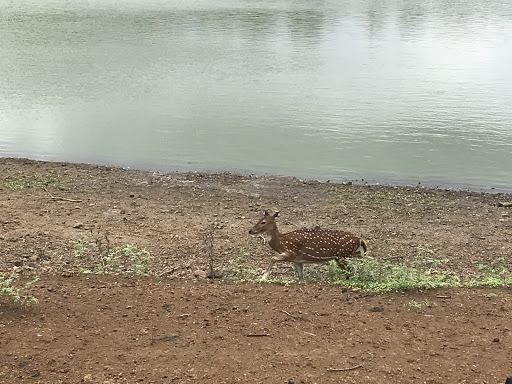Housing the memorabilia of the noteworthy descendants of Chhatrapati Shivaji, the New Palace Museum (also known as the Shahaji Chhatrapati Museum) represents the diverse inclinations, interests, ventures, accomplishments, alliances/relations and lifestyles of the royal family of Kolhapur. While the palace itself was built during 1877–84 by Charles Mant, the museum was inaugurated in 1974, the birth centenary of Rajarshi Shahu Maharaj, who is hailed as one of the most influential and progressive rulers of the city. The museum was conceptualised by Shahaji II, in consultation with his advisors, who were well-versed in curatorial and museology endeavours.
The museum displays a variety of paintings, photographs, statues and ornate pieces of furniture (made of shisvi and teak wood). Some other attractions include the Shahu Gallery—devoted to the personal belongings of Rajarshi Shahu, letter exchanges with viceroys and British generals, and photographs chronicling his life and contributions to the cultural and social betterment of the city. His promotion of wrestling, hunting and progressive strategies are reflected through the items displayed in the gallery. Intricate embroidery and bead work created by the queens are also displayed. The corridors also showcase extensive family trees: one such chart of the rulers of Mewar depicts the connection between Chhatrapati Shivaji’s ancestors and one of the royal households of Rajasthan.
The arms gallery includes an elaborate collection of weapons and ammunition. This section also focuses on the tools that were made by royal demand to control elephants during combat or training. Elephant saddles and howdahs made of silver as well as the royal palanquin and crib are exhibited. Since most members of the family were hunting enthusiasts, there are photographs of both men and women participating in hunting activities. The photograph of Shahaji II with the hundredth hunted tiger is an eye-catching artefact. The gallery of stuffed animals hunted by the royal family is also popular. There are tables made of animal legs or antlers, carpets, a stick made from the tail of a tiger and cases created from animal skulls, to name a few. The Darbar Hall, recreated by the museum authorities, projects majesty and grandeur. Apart from the intricate carvings on the walls, the arches are covered with Italian stained-glass paintings chronicling the life of Chhatrapati Shivaji Maharaj. A painting of Chhatrapati Shahaji II’s last court in 1947 by Baburao Painter is displayed in the hall. Paintings by noteworthy artists such as Raja Ravi Verma, Chandrakanth Mandre and Rao Bahadur Dhurandar are also popular attractions.
The palace is surrounded by a plush garden. A little beyond its premises are a lake and an open zoo, home to migratory birds and some herbivores.
16.719439728838, 74.231657981873











The arms gallery contains a gold-plated double-barrelled shotgun, manufactured by E.M Reilly & Co., ordered by Rajaram Maharaj in 1870 during a trip to England. This section also contains a replica of the ‘Hon’ or sixteenth-century gold coin issued during the reign of Chhatrapati Shivaji on the occasion of his coronation. While five of six of these coins are found here, a few other coins are exhibited at the National Museum in New Delhi and the Prince of Wales Museum in Mumbai.
A silver plough displayed at the Shahu Gallery was presented to Chhatrapati Shahu Maharaj during the inauguration of the first railway line from Miraj to Kolhapur in 1888.
The sheet music for the anthem of Kolhapur state dates back to approximately 1756.
